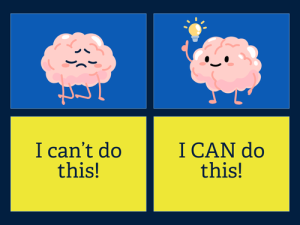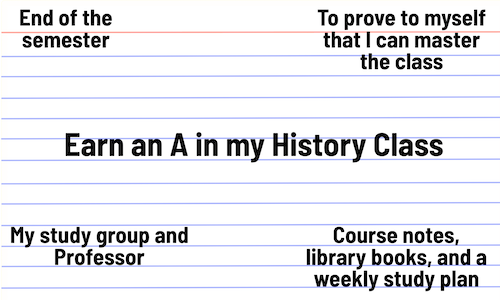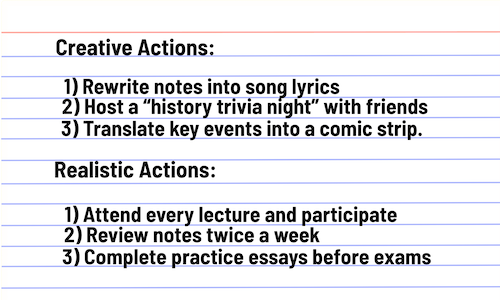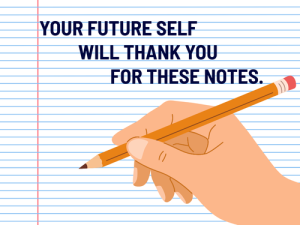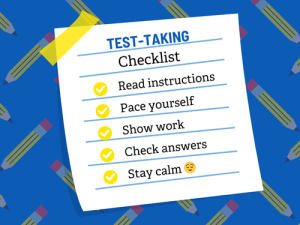1. Consider class over only after you have reviewed your notes.
This may not only be the most important note-taking skill you learn, but also the most important study skill! If you can adopt this habit, you are on your way to success. However, there’s a huge mental hurdle to jump. You may have been conditioned to think class is over when the bell rings or the professor dismisses class. Instead, remember: class is over when you have reviewed your notes. You may not be able to do it immediately after class, but make sure you review your notes before the next class.
2. Write only on one side of the paper.
Your notes will be easier to read, and the back side provides space to add notes from your book or examples when you review and study later.
3. Skip lines.
Your notebook is not the place to single-handedly try to save the rainforest. Space your notes out! Don’t try to cram an hour-long lecture onto one page. Skipping lines allows room to add information later, clearly separates new thoughts, and keeps your notes more readable and organized.
4. Listen.
It sounds obvious, but it isn’t. To be a good note-taker, you can’t simply go to class—you must listen actively. Before class begins, challenge yourself to stay on task. If your mind wanders, make a check at the top of your notes and refocus. Make a check each time you catch yourself drifting. At first you might have a lot of checks. For each class, try to have one less check. You’ll get better!
5. Take your own notes.
In other words: go to class! It is difficult to understand someone else’s notes as well as your own. If you miss a class, borrowing notes is better than nothing—but don’t make a habit of it.
6. Discuss your notes with others.
While it’s important to take your own notes, it’s valuable to talk about them with others. If you have questions, clarify them with a classmate, tutor, or professor. Comparing notes forces you to articulate your understanding in your own words.
7. Use abbreviations wisely.
Abbreviations help you write more in less time, but keep them simple and consistent. Consider writing abbreviation meanings in the margin to avoid confusion later on.
8. When in doubt, write it down.
If something seems easy or obvious, don’t fool yourself—write it down. We forget 80% of what we hear after 30 minutes unless we write it down or rehearse it. If it’s important, note it—no matter how sure you are you’ll remember.
9. Don’t let your opinions interfere with your note-taking.
Focus on the content, not how it’s being delivered. Even if you disagree with something, be sure to record it. If you include your own or others’ opinions, clearly label them as such.
10. Pay special attention to the first and last 5 minutes of class.
The first 5 minutes often preview what will be discussed. Use this as a roadmap to follow along better. The last 5 minutes may include a summary of key points—or a quick info dump if time is short. Don’t zone out or pack up early—you could miss critical material.
